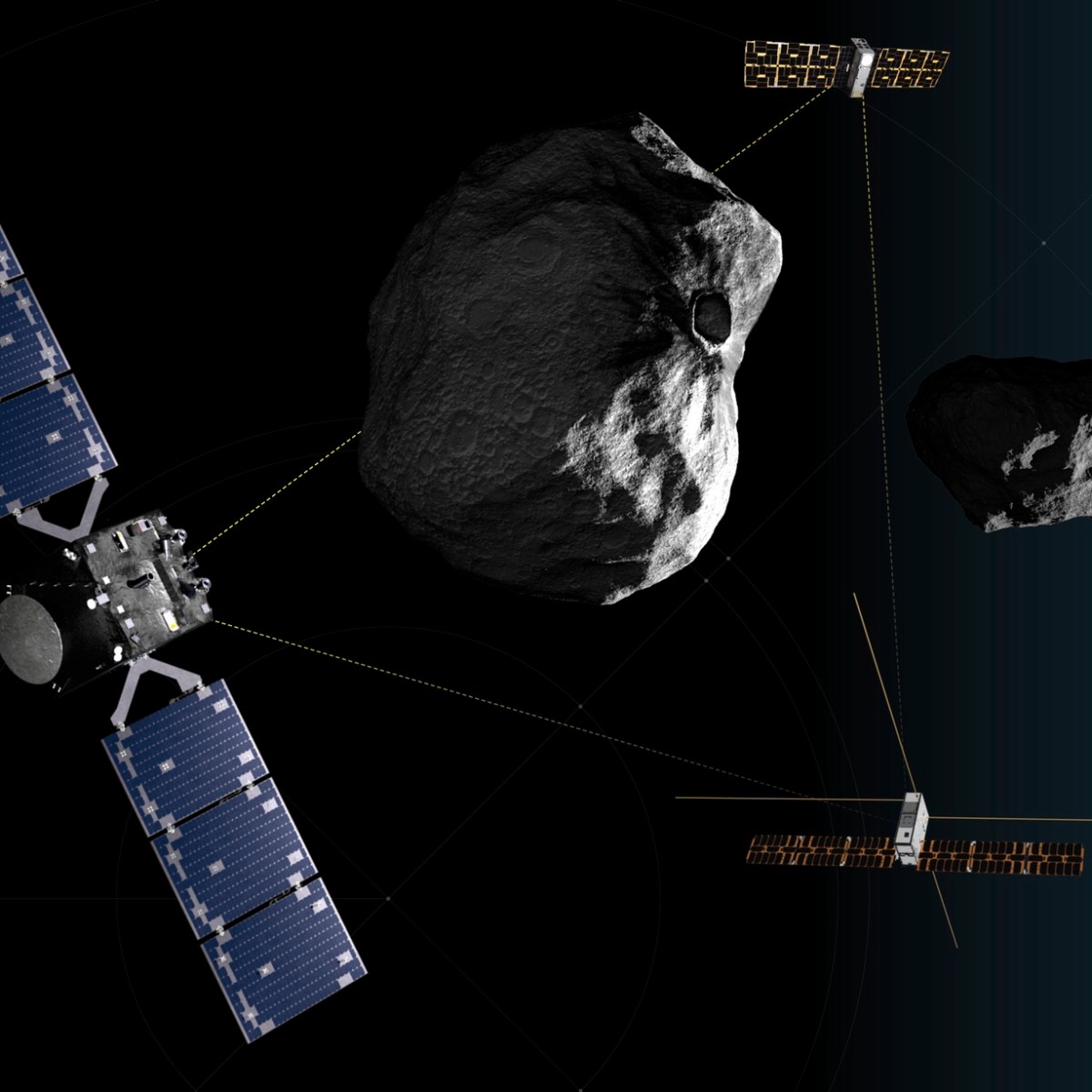European Space Agency Prepares for Hera Asteroid Mission Amid Falcon 9 Anomaly
WASHINGTON — Despite a recent anomaly with SpaceX’s Falcon 9 rocket, the European Space Agency (ESA) is moving forward with its preparations to launch the Hera asteroid mission. The mission is scheduled for liftoff at Cape Canaveral on October 7 at 10:52 a.m. Eastern time.
During an October 2 briefing, officials involved with the Hera mission confirmed that they are on track with the preparations, including encapsulating the spacecraft into the rocket’s payload fairing on October 3.
Background on the Falcon 9 Anomaly
The Falcon 9 has been grounded since an issue occurred during its last flight on September 28. SpaceX reported an “off-nominal deorbit burn” by the rocket’s upper stage, which caused it to reenter the atmosphere outside its designated zone in the South Pacific Ocean. SpaceX has stated, “We will resume launching after we better understand the root cause.”
Further details about the incident or its investigation have not been disclosed by SpaceX. Interestingly, Elon Musk, SpaceX’s CEO, has been silent about this incident on X (formerly Twitter), despite his usual practice of sharing updates about the company’s activities.
The Federal Aviation Administration (FAA) confirmed in a statement on September 30 that they are requiring an investigation into the anomaly. However, the FAA also noted that SpaceX does not need to complete this investigation before resuming launches, assuming public safety is not compromised.
ESA’s Progress and Commitment
During the ESA briefing, Ian Carnelli, project manager for Hera, mentioned that the mission team is receiving daily updates on the investigation’s progress. “We are very happy with the progress they are showing to us, which proves their commitment to launch us,” he said. “We are maintaining the nominal launch campaign.”
“We will be ready to launch on October 7,” Carnelli added, pending FAA approval for Falcon 9 launches to resume. He also noted that ESA is open to having Hera be the first mission to fly after the Falcon 9’s return to service, rather than waiting for SpaceX to launch other missions, such as those carrying Starlink satellites.
Launch Window and Mission Objectives
The Hera mission’s launch window extends through October 27, with daily instantaneous launch windows available. Carnelli also mentioned that NASA has requested a 48-hour standdown ahead of the launch of Europa Clipper on a Falcon Heavy at the Kennedy Space Center, which is currently scheduled for October 10.
Launching within this window will allow Hera to reach its destination, the asteroid Didymos and its moon Dimorphos, by the end of 2026. This asteroid system was previously visited by NASA’s Double Asteroid Redirection Test (DART) spacecraft, which collided with Dimorphos in 2022 to alter its orbit as a demonstration of a planetary defense technique.
Scientific Goals of Hera
Hera aims to study the aftermath of the DART impact. “The first thing is to find out how efficient the impact was,” said Michael Kueppers, Hera project scientist. Scientists are interested in measuring how much momentum was transferred from the DART spacecraft to Dimorphos and assessing the additional push provided by debris ejected from the asteroid. Measuring the mass of Dimorphos will help calculate this efficiency.
Hera will also observe the surface of Dimorphos to analyze the crater or other changes caused by the DART impact. “We will learn a whole lot about how the impact process works,” Kueppers said. “Apart from the scientific interest, this is highly valuable if we want to apply the technique in a real case.”
Technological Innovations
Hera is equipped with 12 instruments and will deploy two cubesats, marking ESA’s first deep-space cubesat missions. These cubesats could enable close-up observations of the asteroids if Hera detects a lingering cloud of debris from the impact, according to ESA flight director Ignacio Tanco.
Project Cost and Future Missions
The Hera mission has a final confirmed cost of 363 million euros (about $401 million), which is below initial estimates. Carnelli noted that this budget performance freed up 20 million euros to commence work on Ramses, a mission to visit the asteroid Apophis before its close flyby of Earth in 2029. Ramses will be a simplified version of the Hera spacecraft with a single-string architecture.
“Nobody believed we were going to make it,” Carnelli recalled, referencing discussions at the 2016 ESA ministerial conference where ESA members rejected an earlier version of Hera, known as the Asteroid Intercept Mission. ESA approved Hera at the next ministerial conference in 2019, but with a tight budget and schedule.
Overcoming Challenges
The delay in the mission’s approval was actually beneficial, allowing the team more time to prepare properly. This included getting the prime contractor OHB and various subcontractors, such as Avio, GMV, Redwire, Spacebel, and Thales Alenia, in place. The mission also successfully navigated the challenges posed by the COVID-19 pandemic and subsequent supply chain issues.
“The fact that we had a very strict launch window, I think, pushed every single supplier to do their best,” Carnelli said. “It really was an amazing project, and I can only be extremely proud of what we have achieved together.”
Conclusion
The Hera mission represents a significant step forward in planetary defense and space exploration. Despite the recent anomaly with SpaceX’s Falcon 9 rocket, ESA’s commitment to the mission remains unwavering. With a successful launch, Hera aims to provide invaluable data on asteroid impact processes, which could be crucial for future planetary defense initiatives. For more details on the latest updates, please refer to the official website.
For more Information, Refer to this article.

































